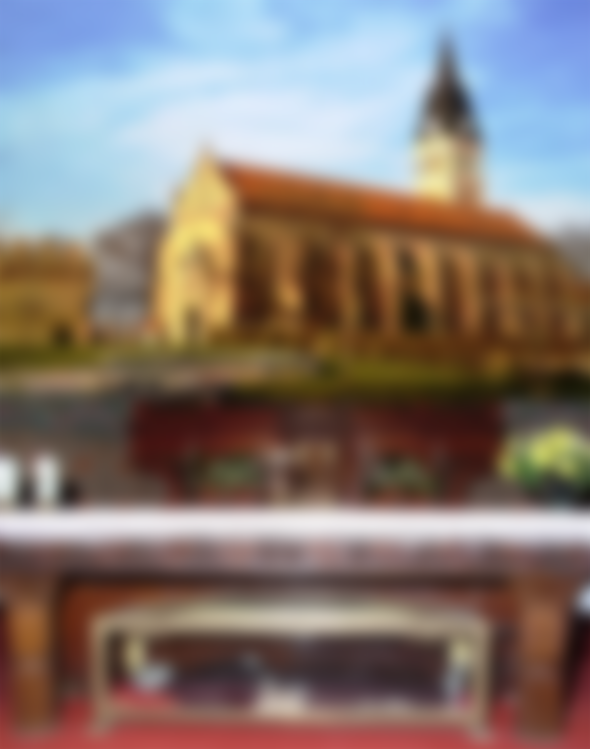Ilok (5 km²) is located in fertile Srijem, on the slopes of Fruška gora and above the blue Danube, in the easternmost part of the Republic of Croatia. The place has about 5,350 inhabitants, of which about 3,500 are Catholics. The majority of the population are Croats, followed by Slovaks, who are mostly evangelicals. In addition to the native Croats, the majority of the population are immigrants from Bosnia and Herzegovina, and Žumberak people who are Greek Catholics by faith. Ilok is known for its advanced viticulture and good wines, and all branches of agriculture have been developed for the needs of the population.
The Franciscans have been in Ilok for sure since 1343. In 1349, Duke Ugrin built today's church in the Gothic style, which was dedicated to the Mother of God taken to heaven.

Throughout history, Ilok is known for the fact that the Apostle Saint Ivan Capistran died and remained in it of his own free will.
His apostolic zeal and papal mission brought him to our region where as a military pastor he took part in the decisive battle of Belgrade on July 22, 1456, which at least for a while stopped the invasion of the Turkish superpower that threatened to destroy Europe.

'Ilok was the goal of Kapistran's wishes, he repeated many times, when he died, that his body be buried in Ilok.
He considered the Ilok fortress to be important not only for strategic reasons, but above all for religious ones, ……, 'This place should be kept. When you bury my bones, do not leave Ilok! '


The Franciscans in Ilok were first mentioned in the 14th century when Duke Ugrin also built a church. In honor and glory of St. John Capistrano, after his death, it was extended and restored by King Nicholas.

Capistran was canonized in 1690, and the cell-chapel in which he suffered and died in 1456 has been preserved in its original condition. Today it is visited by pilgrims and the curious and they find in it the spiritual strength and faith that radiate and the whole church and monastery.
And once many dignitaries and ordinary people came to pay their respects to the dying Capistrano, the first miraculous healings began to take place there and continued after his death at his grave.
There is also a written testimony of "Miracles of Ivan Kapistran" in which 100 such events are described. This text is kept in the National Library in Paris, and a couple of original copies are in Rome and the Vatican.
Copies of his personal manuscripts are kept in the Ilok monastery library. The monastery leaning against the church was built and renovated several times in the period from the 14th to the 20th century. The latest stylistic changes and renovations were led by Herman Bolle in a neo-Gothic style similar to the one he applied at the Zagreb Cathedral. During the Homeland War and exile, the church was rocketed and mined several times.





Blog servis je jučer uveo novu opciju i na preview članka piše da je potrebno do tri minute za čitanje ovog artikla. Ovo mi je zanimljivo: the majority of the population are immigrants from Bosnia and Herzegovina, and Žumberak people who are Greek Catholics by faith.